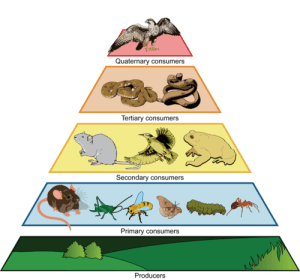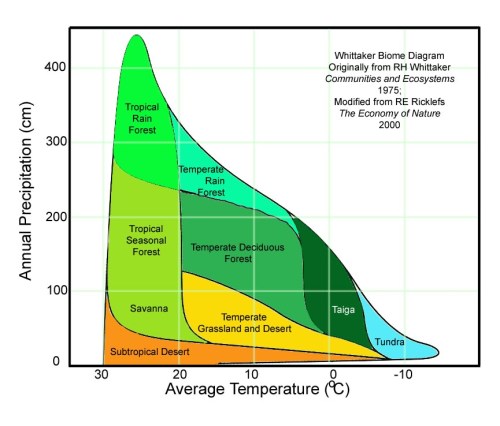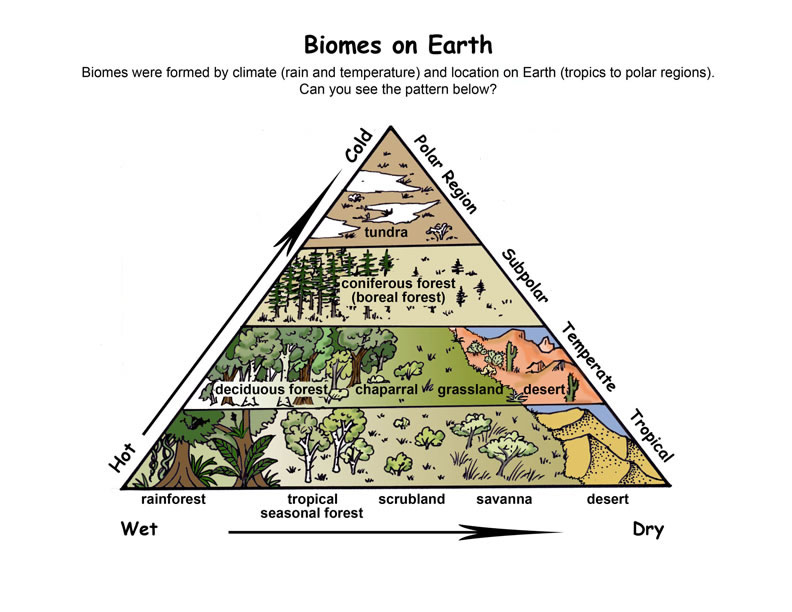(under construction 1.12.15)
#1 Create the chart below into your notebook. Watch the video and fill in the missing information:
| Biotic | Abiotic | Result |
| Plants | Sun | |
| Turtle | Buried to keep cool | |
| water | stays hydrated | |
| temperature | body temp matches surroundings | |
| fox | blends in to surroundings | |
| bacteria | soil |
#2 – As you watch the video below, answer the following questions in complete sentences:
- How many people are added to the planet each second?
- Name an example of a population.
- What is a community?
- Give an example of how abiotic factors affect biotic factors.
#3 – Write the following chart into your notebook and complete the boxes as you watch the video. For each interaction, record in the box if a species benefits (+), is harmed (-), or is unaffected (0) by their relationship.
| Symbiosis | Organism 1 | Organism 2 |
| Mutualism |
Flower |
Bee |
| Commensalism |
Remora Fish |
Shark |
| Parasitism |
Mosquito |
Person |
#4 – Using the diagram posted below, write and answer the following questions into your notebook:
- Which level is the largest in size? What are those organisms called?
- What are frogs classified as?
- What are ants classified as?
- What happens to the number of organisms as you move up the pyramid?
#5 – Write the following questions into your notebook. Watch the video below to answer the questions in complete sentences.
- Before the Industrial Revolution, there wasn’t a lot of pollution covering the trees. What type of moth was successful in hiding from predators?
- Why was it easy to find the other types of moths?
- After the Industrial Revolution, what happened to the trees?
- What type of moth became successful, and why?
- Define what adaptation means.
#6 – Watch the first 3 minutes of the video below (you can watch all if you like). Using complete sentences, describe 4 different ways that elephants help the ecosystem that they live in.
#7 – Write the following questions into your prompt notebook and answer in complete sentences. Use the graph below to answer the questions:
- Which Biome has the most precipitation?
- Which Biome has the least precipitation?
- Name 3 Biomes that have an average temperature in the 0 degree Celsius range.
- Which Biome has the largest average temperature range? From what to what?
- List the 3 Biomes that have an average temperate range mostly between 20 to 30 degrees Celsius.
#8 – Describe 3-4 adaptations that Burrowing Owls have that help them to live in their environment.
#9 – Use the model below (showing the relationship of precipitation and temperature for each biome) to answer the following questions. Copy down the questions and answer in complete sentences:
- Name 3 treeless biomes. What is the main reason why they are treeless?
- Describe 2-3 ways in which deserts and tundra very similar.
- Which biome is dominated by coniferous trees?
- What differentiates a grassland from a temperate forest? What is the primary factor that can change a grassland into a temperate forest?
#10 – Using the graph below, list 4 facts, observations, or inferences in complete sentences. For example: “In July, the average temperature in a deciduous forest (like NJ) is actually hotter than in a rain forest.”



